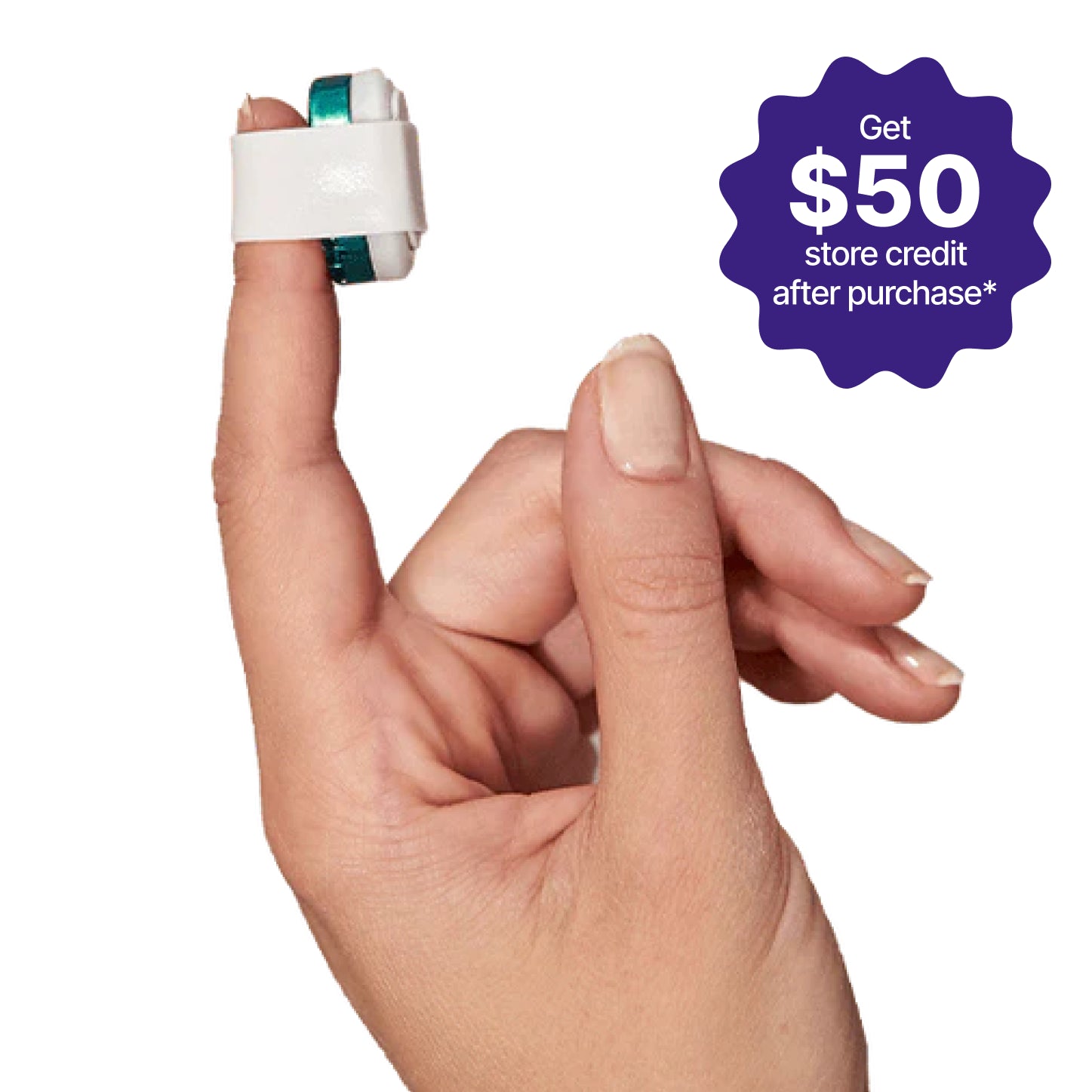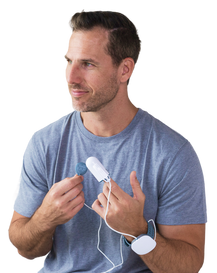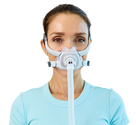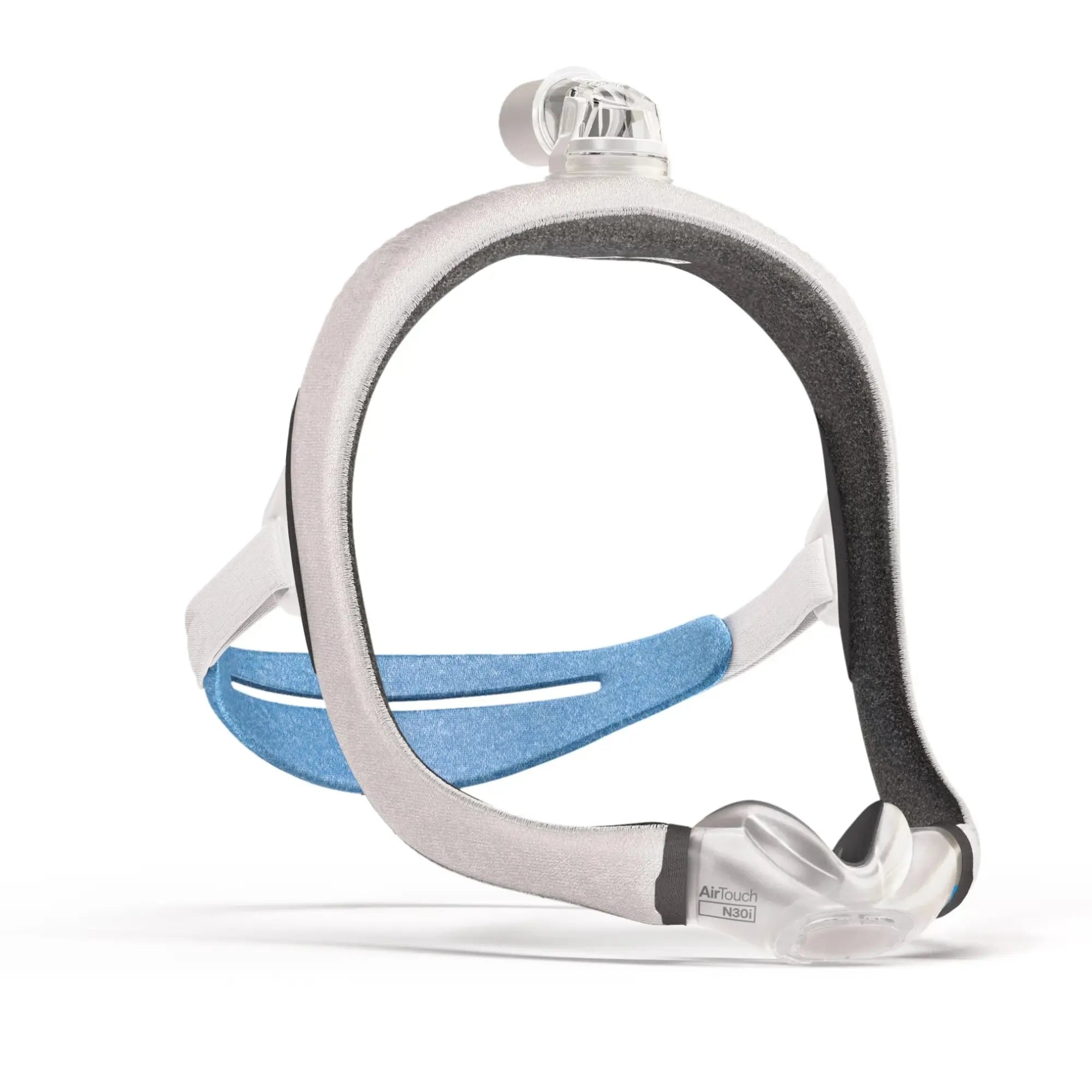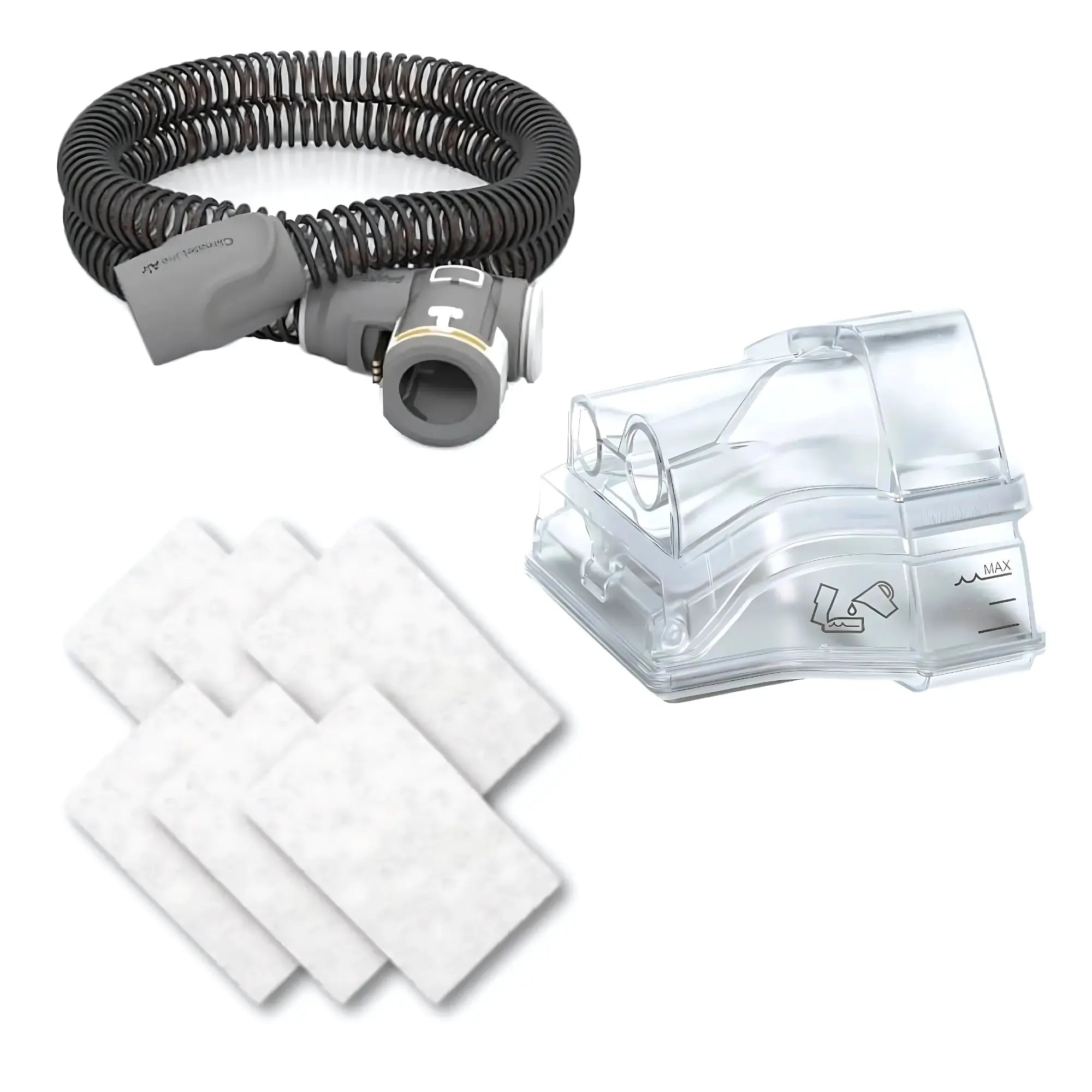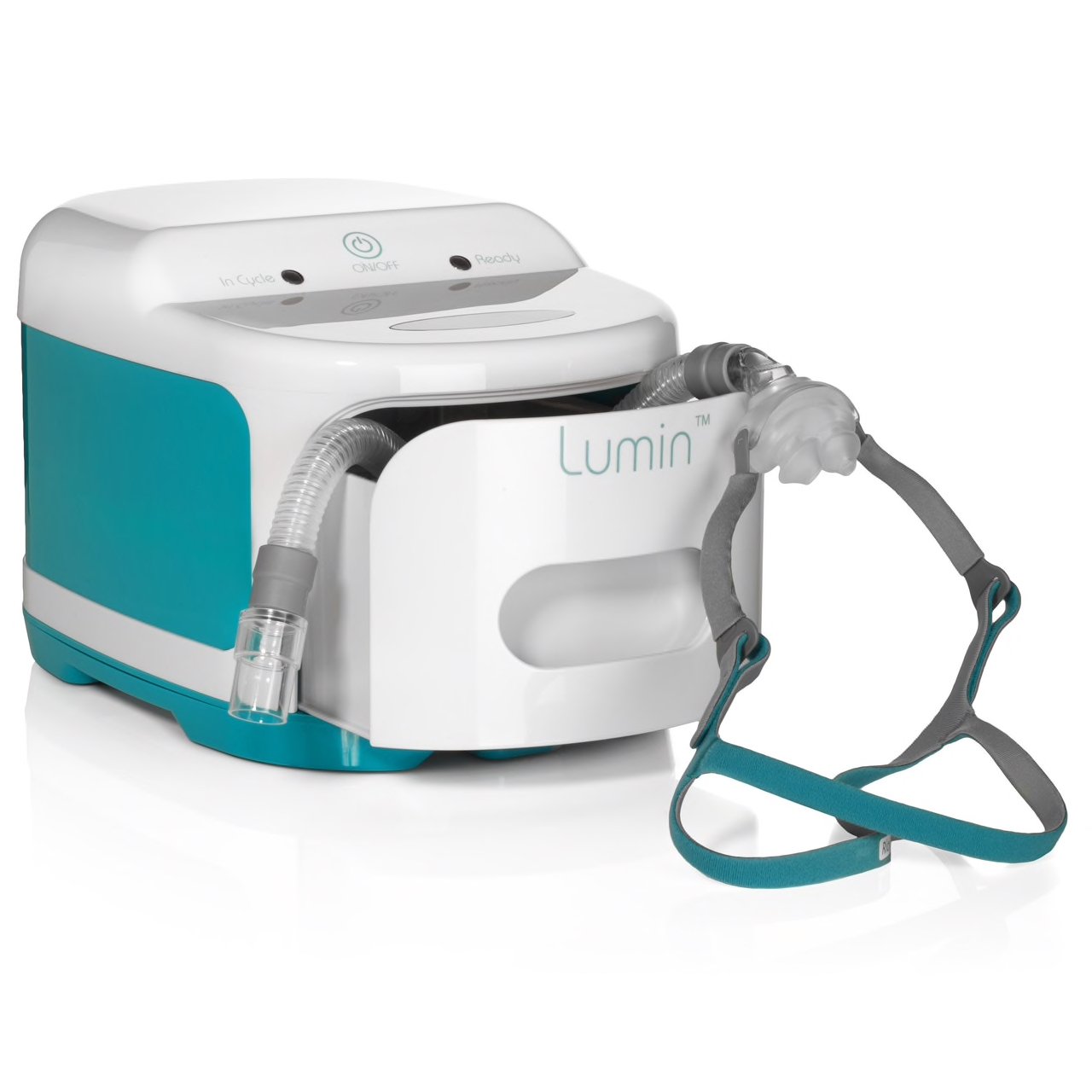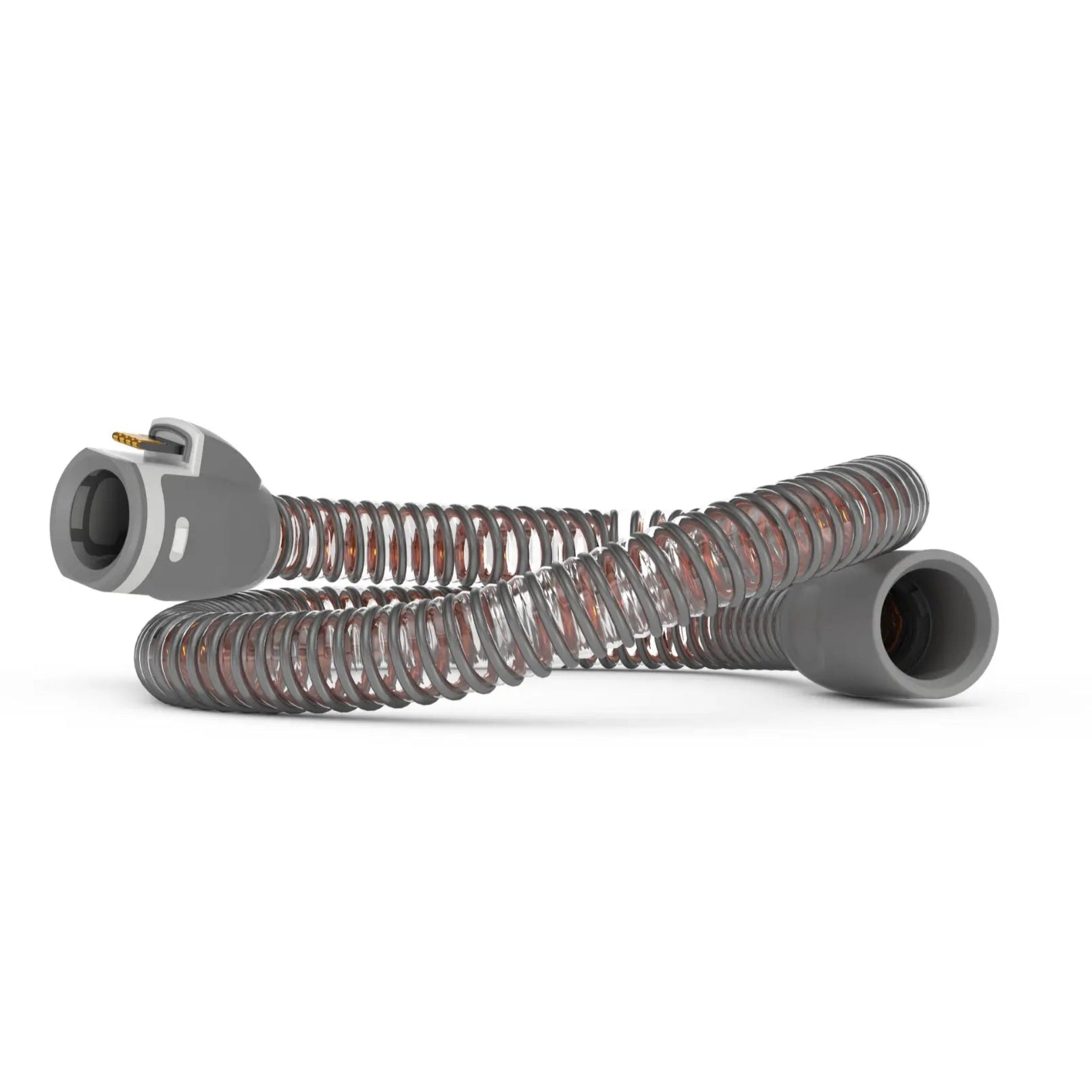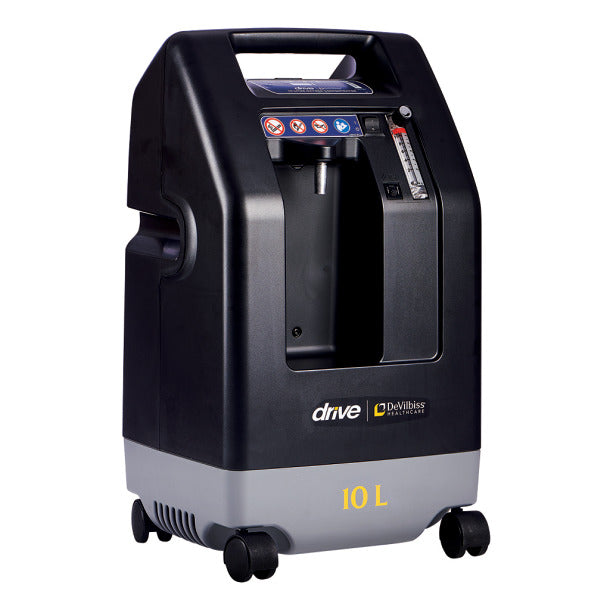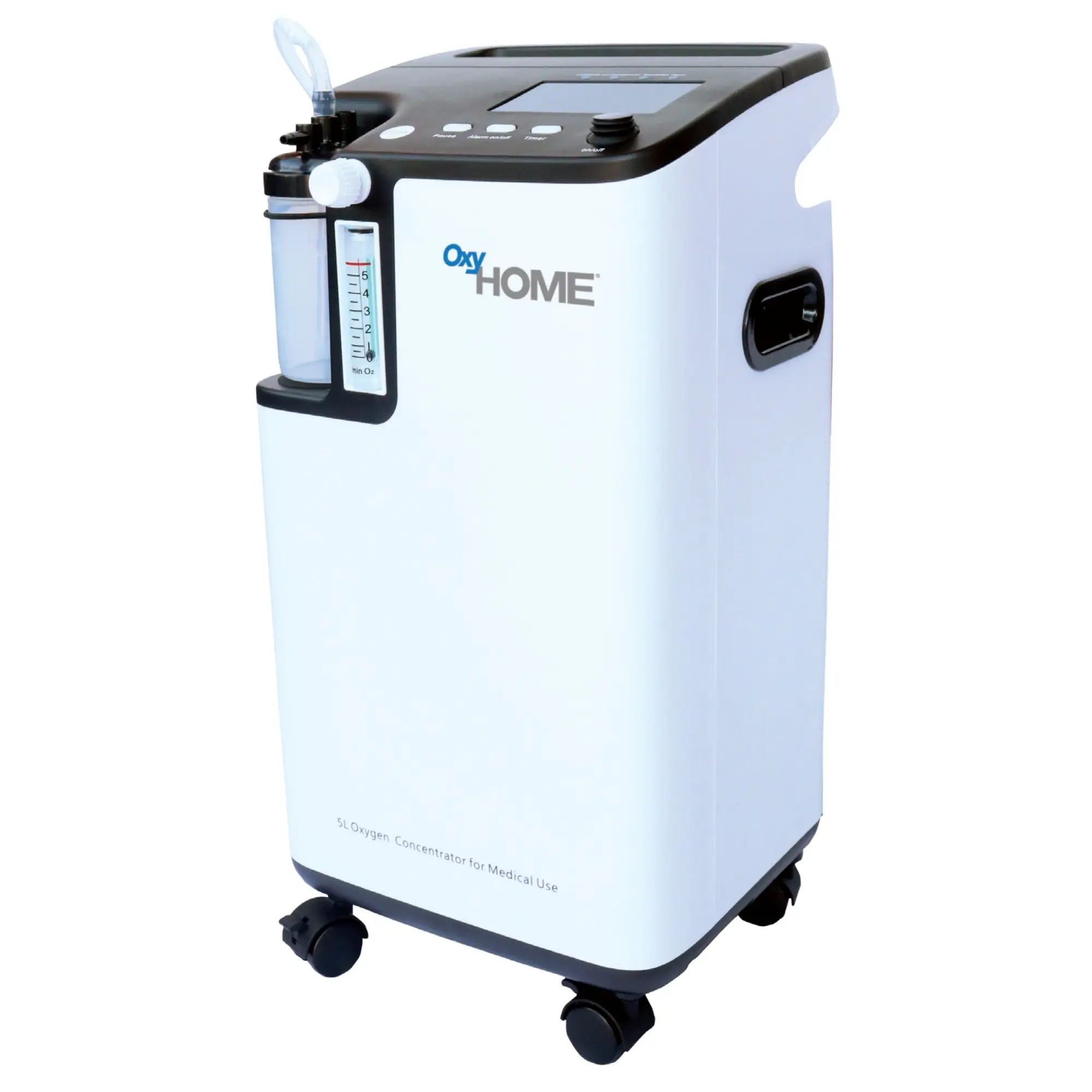Sleep apnea affects millions of people worldwide, and it can greatly affect quality of sleep, as well as the quality of life, health, and well-being. This sleep disorder can be classified as central or obstructive sleep apnea, which are distinct medical conditions with different causes and treatments.
Continue reading to learn the differences between obstructive sleep apnea and central sleep apnea, as well as their symptoms, diagnosis, and treatment options.
What’s the Difference Between Obstructive and Central Sleep Apnea?
Sleep apnea is a common sleep disorder that afflicts around 30 million US adults, according to the American Academy of Sleep Medicine. Those who suffer from this sleep disorder experience pauses in their breathing while they sleep (apnea episodes), and it can be a risk factor for the development of other chronic medical conditions. There are two main types of sleep apnea syndromes: obstructive sleep apnea and central sleep apnea.
Obstructive Sleep Apnea
Obstructive sleep apnea (OSA) is the most common form of sleep apnea. It’s more common in men than in women.
In this type of sleep-disordered breathing, the muscles and soft tissues located in the back of the throat, which naturally relax to some extent during sleep, tend to collapse excessively and cause a blockage of the upper airway, thereby impeding normal breathing and resulting in decreased breathing or hypopnea and apnea episodes.
When the airway obstruction is partial, the soft tissues in the back of the throat vibrate, causing the person to snore loudly. This is the most common symptom of OSA, and it’s often noted by the person’s sleeping partner before other symptoms develop.
Other common sleep apnea symptoms are:
● Waking up snorting or gasping for air
● Excessive daytime sleepiness
● Morning headaches
● Mood swings and depression.
Some of the risk factors for OSA are:
● Obesity: It’s one of the most important risk factors for OSA. The fat deposits around the upper airway can narrow it and make it more prone to obstruction while you’re lying down.
● Age: OSA is more common in people over forty years old. This has been associated with changes in the elasticity and muscle tone of the throat, as well as in hormone function and body fat distribution.
● Family history and genetics: OSA can run in the family, as some genes affect the shape and size and the face and airway. Some genetic conditions, such as Down syndrome can also increase the risk of developing OSA.
● Upper airway abnormalities: People with enlarged tonsils or adenoids, chronic nasal congestions and polyps are more likely to suffer from OSA.
● Lifestyle habits: Smoking and drinking alcohol can worsen OSA by causing inflammation, swelling, and the relaxation mechanics of the throat muscles.
Untreated OSA can lead to an increased risk of developing:
● High blood pressure: The repeated drops in blood oxygen levels and increased stress from waking up frequently can raise your heart rate and blood pressure, which strains your cardiovascular system. This can increase your risk of chronic heart disease, strokes, and congestive heart failure.
● Type 2 diabetes: OSA can affect how your body uses insulin, the hormone that controls blood sugar levels. It can also cause inflammation, as well as other hormonal changes that make it harder for your body to regulate your blood sugar.
● Cognitive impairment: Not getting enough hours of sleep due to apnea episodes can impair your memory, focus, decision-making capabilities, and mood. This can negatively affect your performance at work and school, and increase your risk of making mistakes and getting into accidents. Untreated OSA has also been associated with a higher risk of depression, anxiety and dementia.
Central Sleep Apnea
Central sleep apnea (CSA) is a sleep disorder that affects your breathing pattern while you sleep. It occurs when there is a disturbance in your central nervous system, making brain signals unable to reach the muscles that control your breathing.
In people with CSA, breathing is often resumed after a few seconds or minutes when carbon dioxide accumulates in the body and stimulates the breathing center in the brainstem.
There are different types of central sleep apnea, some of which are:
● Cheyne-Stokes breathing: Cheyne-Stokes respiration is often associated with strokes caused by atrial fibrillation, which is one of the most common types of irregular heart rhythm. It causes a cyclical breathing pattern, in which breathing progressively increases and decreases in depth and rate, followed by periods of no breathing.
● Drug-induced apnea: This type of CSA is caused by taking certain medications, such as opioids, benzodiazepines and other sedatives, which affect your brain’s ability to regulate your breathing. Opioid use can also worsen other types of sleep apnea.
● High-altitude periodic breathing: This occurs when people who aren’t used to high-altitudes sleep in a place that’s above 15,000 feet. The low oxygen levels in the air can trigger changes in your breathing pattern. This results in periods of hyperventilation, in which the person breathes faster and deeper, followed by short apnea episodes.
● Idiopathic central sleep apnea: When a cause for CSA can’t be found, it’s called idiopathic central sleep apnea. It could be related to problems that affect the function of the brainstem, which controls many vital functions, including breathing.
Common symptoms of CSA:
● Waking up abruptly with shortness of breath
● Insomnia
● Excessive daytime sleepiness
● Difficulty focusing and remembering things
● Irritability
● Morning headaches.
Unlike in OSA, loud snoring isn’t a common symptom of CSA, but it can be present in some people.
Some risk factors for CSA:
● Male: Men are more likely to have CSA than women.
● Older age: The risk of developing CSA increases in people over 65 years old.
● Heart or neurological disorders: Some medical conditions, such as heart failure, strokes, brain tumors, Parkinson’s disease, and spinal cord injuries, can affect your brain’s ability to control your breathing.

Some people can have a combination of obstructive sleep apnea and central sleep apnea, which usually occurs when a person with OSA develops CSA, and it’s called complex sleep apnea.
What All Types of Sleep Apnea Have in Common
Regardless of the type of sleep apnea, people with sleep apnea experience intermittent breathing interruptions. These apnea episodes lead to micro-awakenings.
In severe cases of sleep apnea, these micro-awakenings can happen tens or hundreds of times throughout the night. Since these micro-awakenings are so short, more often than not, individuals with sleep apnea may not notice that their sleep is being interrupted. Even if they go unnoticed, these episodes interrupt the natural sleep cycles and hinder the person’s quality of sleep.
Consequently, individuals who suffer from sleep apnea may experience substantial fatigue and daytime sleepiness, despite believing they have had a full night’s sleep.
Treatment for OSA and CSA
Both types of sleep apnea are treatable. There are several sleep apnea treatment options that have shown to be effective in decreasing the symptoms and negative health effects of sleep apnea.
In the case of CSA, its treatment will depend on the underlying conditions. In some cases, treating the underlying cause can improve or resolve the CSA.
Some of the most common treatments for sleep apnea are:
Lifestyle changes
In mild cases of sleep apnea, lifestyle changes can help significantly improve sleep apnea symptoms. Some of the recommended changes are:
- - Losing weight, in case of obesity.
- - Quitting smoking.
- - Avoiding the use of alcohol and sedative medications before sleep.
- - Sleeping with your head in an elevated position.
- - Practicing good sleep hygiene practices.
Continuous Positive Airway Pressure (CPAP) Therapy
CPAP therapy is the most common and effective treatment for OSA. CPAP machines work by delivering a continuous airflow at a high air pressure through a mask that covers your nose or nose and mouth. This keeps the upper airway open and prevents it from collapsing.
Depending on their ability to adjust the air pressure they deliver, CPAP machines can be classified as:
-
- Bilevel positive airway pressure (BiPAP) machines: They adjust the air pressure depending on whether you are inhaling or exhaling. This makes it easier for people to breathe, since they don’t have to fight against high air pressure when trying to breathe out.
- - Auto-adjusting continuous positive airway pressure (CPAP) machines: CPAP machines use sensors to monitor your breathing pattern, and adjust the air pressure accordingly.
A common side effect of the use of CPAP machines is having a dry mouth upon waking up, but this can be solved by using a device with a humidifier.
Adaptive Servo-ventilation (ASV) Therapy
ASV is a type of positive airway pressure therapy that’s commonly used for central sleep apnea. It monitors your breathing and delivers an air pressure that matches your natural breathing rhythm. It can help regulate your breathing and prevent apnea episodes and other breathing irregularities.
The main difference between ASV and CPAP therapy is that ASV machines adjust the air pressure dynamically according to the person’s breathing pattern without a preset air pressure range. Unlike non-adjusting CPAP machines, which always deliver the same air pressure, and auto-adjusting CPAP machines, which adjust the air pressure within a preset air pressure range.
Mandibular Advancement Devices
This common oral appliance for OSA resembles mouthguards, fitting over upper and lower teeth. It features an adjustable mechanism to move the jaw forward, widening the upper airway entrance.
Typically, a sleep specialist or orthodontist determines the ideal position. It's beneficial for those with a receding jaw (retrognathic mandible) that narrows the airway, increasing sleep apnea risk. Side effects may include jaw pain, tooth movement, dry mouth, and increased salivation.
Tongue restraining devices
They aren’t as commonly used as mandibular advancements devices, but they can be useful for people who cannot tolerate those, or who have a small or recessed jaw.
They look like pacifiers and have a suction bulb that holds the tongue forward. They don’t require adjustments or fittings, and can be used by people who have no teeth or who wear dentures.
Surgery
Medications
Medications are not usually the first-line treatment for sleep apnea, as they may have limited effectiveness or cause side effects. However, some may be helpful for certain types of sleep apnea or in combination with other treatments.
Some of the medications that could be used in the treatment of sleep apnea are:
-
- Modafinil and armodafinil: These are stimulants commonly prescribed to people who still experience excessive sleepiness despite proper use of their CPAP device.
-
- Acetazolamide: This medication is a diuretic that can help reduce fluid retention and improve breathing in people with CSA caused by congestive heart failure or high-altitude.
-
- Theophylline: This is a bronchodilator that can help relax the muscles of the airway and increase respiratory drive in people with CSA.
- - Mirtazapine: This is an antidepressant that can help reduce REM sleep and increase muscle tone in the airway to decrease apnea episodes in people with OSA.
However, these medications are not explicitly approved for the treatment of sleep apnea, which means that they are only to be used off-label under the supervision of a physician. They may also interact with other medications that the person may be taking.
Some common side effects of these medications are headaches, nausea, anxiety, insomnia or increased blood pressure.
How to Know Which Type of Sleep Apnea You Have
If you think you might have sleep apnea, you should consult with your primary healthcare provider or directly with a sleep specialist. If you do have it, the sleep specialist will determine your type of sleep apnea and what’s the best treatment option for you.
The first thing your doctor will do when you tell them that you’re experiencing sleep apnea symptoms is to complete a comprehensive health record. They may ask about your personal and family medical history, sleep habits, and lifestyle factors such as substance use.
They will also conduct a physical examination to check your blood pressure and make sure you don’t have another condition that may explain your symptoms. After this, if your doctor believes that you may have sleep apnea, they are going to request a sleep study.
A sleep study is a test that monitors your breathing and other body functions while you sleep. It can measure how often you stop breathing, how low your blood oxygen levels drop and how much your sleep is disrupted. These can be done at a specialized sleep center or with an at-home portable device.
Home sleep tests are a great option for people who have difficulty falling asleep in unfamiliar places and don’t have other medical conditions that affect their breathing. That’s why at Sleeplay we offer the WatchPAT One, a hassle-free sleep test that allows you to get your sleep apnea diagnosis within one week—without leaving the comfort of your home!

The most common type of in-lab sleep study is called polysomnography. During this study, you are hooked up to various sensors that record your brain activity, heart rate, blood pressure, eye movements, muscle activity, and chest movements. You may also wear a device that measures the airflow through your nose and mouth, and a device that measures your blood oxygen levels.
The results of your sleep study are usually expressed as an apnea-hypopnea index (AHI), which indicates the average number of times per hour that you have apnea or hypopnea events. The higher the AHI, the more severe the sleep apnea.
According to the American Academy of Sleep Medicine, the AHI categories are:
-
Normal: AHI less than 5
-
Mild sleep apnea: AHI between 5 and 15
-
Moderate sleep apnea: AHI between 15 and 30
- Severe sleep apnea: AHI greater than 30.
By analyzing your AHI, your type of sleep apnea, the cause of your sleep apnea and your predominant symptoms, your doctor will be able to determine what’s the best treatment for your needs.
Even though CSA and OSA have different causes and treatments, they both affect the quality of sleep and increase the risk of heart disease if they go untreated for a long time. It’s important to consult with a doctor if you suspect that you may be experiencing any type of sleep apnea.
Have you been diagnosed with sleep apnea? You can find the best CPAP machines, as well as CPAP masks and supplies, at our online store.



